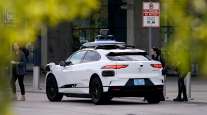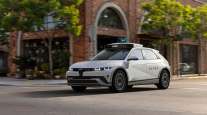Waymo Inches Forward as Self-Driving Frontrunner With 1,000 Riders
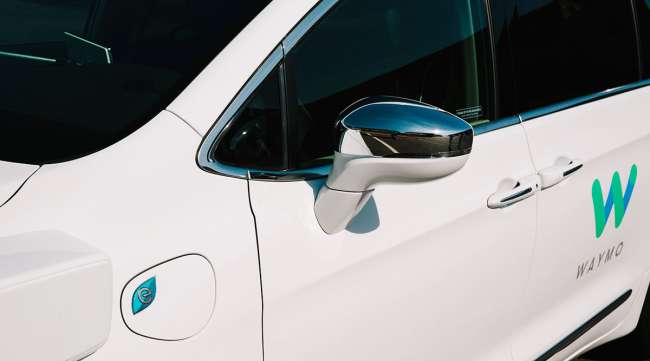
The first major self-driving taxi service needed six months to reach 1,000 customers, another sign that growth may be slow as companies try to build businesses around autonomous vehicles.
Waymo, the self-driving project owned by Alphabet Inc., announced May 7 that it has enrolled 1,000 customers for its ride-hailing service in suburban Phoenix. CEO John Krafcik touted the milestone while revealing plans to allow select Lyft Inc. users in Arizona to hail Waymo taxis. The Google off-shoot is currently the only self-driving company carrying paying customers on public roads, although often monitored by human safety drivers.
Crossing the 1,000-rider mark both solidifies Waymo’s status as the early leader in the autonomous race and underscores the plodding pace of advancement in the industry. Uber, the market leader in ride-hailing with human drivers, counts more than 90 million users worldwide.
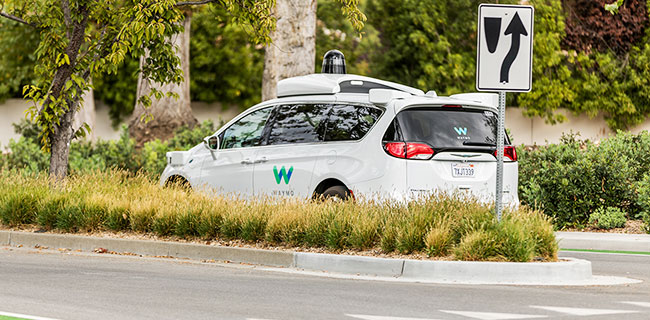
A Waymo, customized Chrysler Pacifica Hybrid, used for Google's autonomous vehicle program near the company's headquarters in Mountain View, Calif. (Getty Images)
Waymo began accepting passengers in April 2017, part of a free-to-use pilot program, and allowed access to a limited number of paying customers last December. Riders have to live in the service area — roughly 100 square miles that include Chandler and parts of Mesa, Gilbert and Tempe southeast of Phoenix — and apply for an invite from Waymo in order to enroll.
By now, the sight of Waymo’s retrofitted Chrysler Pacifica minivans has become commonplace in the area. In a demo late last month, with two Waymo press officials and a safety driver on hand, a robotaxi summoned by the app pulled over in a cul-de-sac near the Chandler library. A Waymo employee selected for the destination a Macy’s store at a mall, about four miles away.
The safety driver sat wordlessly, hands in his lap, as the passengers boarded. “Do not touch the steering wheel or pedals,” read a message on the wheel in front of him. If he did, the text warned, the van would pull over.
The robot drove smoothly during an eight-mile round trip, stopping at red lights, changing speeds evenly and completing unprotected left turns and merges. The software nudged its way forward before making a right turn into traffic. Anyone who couldn’t see the untouched steering wheel might not have guessed that it was a self-driving car.
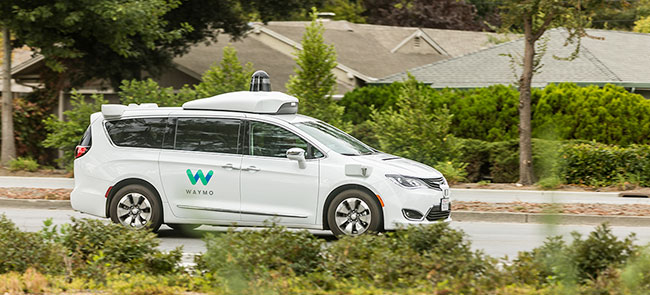
A Waymo, customized Chrysler Pacifica Hybrid, used for Google's autonomous vehicle program near the company's headquarters in Mountain View, Calif. (Getty Images)
The most obvious difference from a human driver? The Waymo robot unfailingly announced lane changes.
The flawless performance comes with caveats: Waymo picked the time (mid-morning on a sunny weekday in spring) and the trip (a straight shot on wide avenues with maximum speeds of 45 miles per hour). Before hailing the car, the Waymo handler walked a couple blocks from a busy street to the little-used library cul-de-sac. Traffic was light throughout, and there were very few pedestrians. The closest thing to a surprise was a truck on the side of the road protected by a pair of traffic cones.
Safety drivers continue to be a reliable presence. “I’ve always had somebody in the driver’s seat, and then sometimes we’ll have an additional person [on the passenger side],” said Adriana Munoz, a 31-year-old Chandler resident who has been a Waymo rider since last August. “I’m looking forward to that time where I can just get in and there’s no one there. That’d be really cool.”
Munoz, who was made available for an interview by Waymo, has taken about 15 trips so far, going to Starbucks, the gym, and restaurants with her son. She commutes in her own car to Phoenix daily and prefers Waymo on weekends, for trips within the service area. The driving, she said, is mostly similar to her own: “They find that good open gap versus maybe somebody that’s more of an aggressive driver would actually take that left-hand turn.”
Perhaps the greatest testament to Waymo’s progress in Arizona is that, for Munoz, the magic of self-driving has already begun to fade. “Most of the time, I’m on my phone,” she said. “It’s just a car taking me someplace.”


